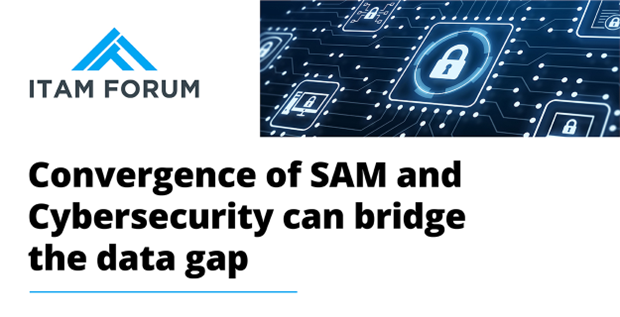Author: Rebecca Horton
Managing Director and Business Lead, USU
Cross-functional collaboration between Cybersecurity and ITAM has never been more essential for risk management and to mitigate IT vulnerabilities.
Modern IT estates are complex and multifaceted. Organisations are transitioning to off-premises cloud landscapes and breaking systems into components in containers. With thousands of applications and services scattered across hundreds of providers, environments, and platforms, leading analysts see a double-digit growth of public cloud services (BPaaS, IaaS, PaaS, SaaS) and an increasing migration away from computing in an on-premises corporate network.
Additionally, more and more enterprise generated data will be created and processed outside a traditional centralised data center or cloud platform as some portion of storage and compute resources move closer to the source of data. This creates new, and compounds traditional, discovery challenges for many enterprises. By pushing computing out to the edge, visibility and control becomes lost.
Cybersecurity has constantly been one of the most important functions of any business. But, it has never been more critical to protect data and identify vulnerabilities. It’s therefore not a big surprise that a recent IDG report found that when ranking concerns regarding the IT asset environment, security and compliance vulnerability top the list.
SAM/ITAM teams help address vulnerabilities and security risk
Software Asset Management (SAM), as a foundational part of any IT visibility program, creates a clear and comprehensive view of the current IT software estate. IT Security needs visibility of every asset for the purpose of vulnerability management and data threats. The most successful Cybersecurity teams work with SAM/ITAM teams to ensure complete discovery data. Products are kept up to date. Patches are installed. Other types of vulnerabilities are identified and actioned in a timely manner.
When data is available within reports, alerts, dashboards, and notifications, organisations can take effective actions to lessen potential vulnerabilities.
However, according to the same IDG report, nearly 80% find it challenging to access the data needed to make sound decisions.
Cybersecurity data fuels SAM/ITAM reporting
Cybersecurity is a source of data for IT installations, software deployments, and user activities. This fills in the gaps and improves data quality and completeness. Additionally, Security and Access Management technologies contain data related to users, locations, organisation structure and behaviors. This enables SAM/ITAM to create reports that extend beyond the typical license management and compliance objectives. To accomplish this, the SAM/ITAM technology requires an open data architecture to bring in and share data across these systems with APIs.
How to promote SAM/ITAM and Cybersecurity sharing
Building stakeholder relationships to promote the sharing of data, is still a challenge for most organisations. According to the IDG Market Pulse Survey 2022, nearly six in ten (59%) report their IT Security and IT Asset Management teams are lacking a unified risk mitigation strategy. This issue seems to compound the larger an organisation is, with only 34% of enterprise organisations (10,000 users and more) indicating they are highly collaborative.
The first step is to secure buy in from the executive and C-Suite. Then, build a governance team with Cybersecurity and SAM/ITAM and other important stakeholders, such as Infrastructure, Configuration Management, IT Operations, Compliance, and Procurement.
The most successful organisations that already leverage these powerful partnerships typically start by engaging with End User, Infrastructure and Security teams. Keep in mind the common objective of transforming data by applying data standards across all tools and technologies.
Additionally, identifying the owners of these applications and documenting them in the catalogue across various roles (e.g., financial, business, and technical) means the RACI (responsible, accountable, consulted, informed) and decision-making process flows smoothly if or when you discover a risk or a opportunity.
Finally, these organisations work to identify common pain points and address these through shared policies (governance), processes, KPIs and metrics to monitor and measure data improvements.

